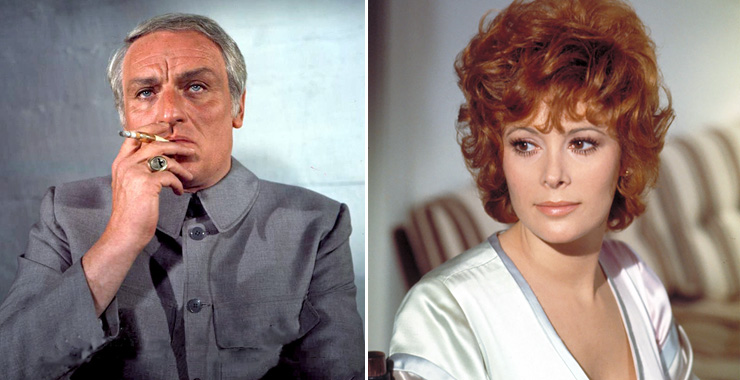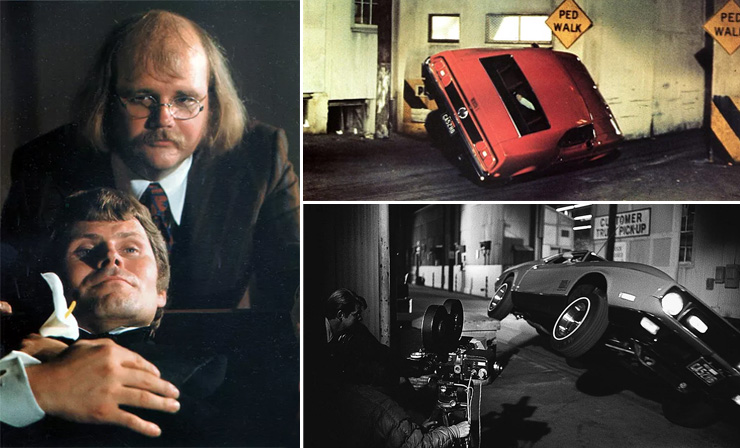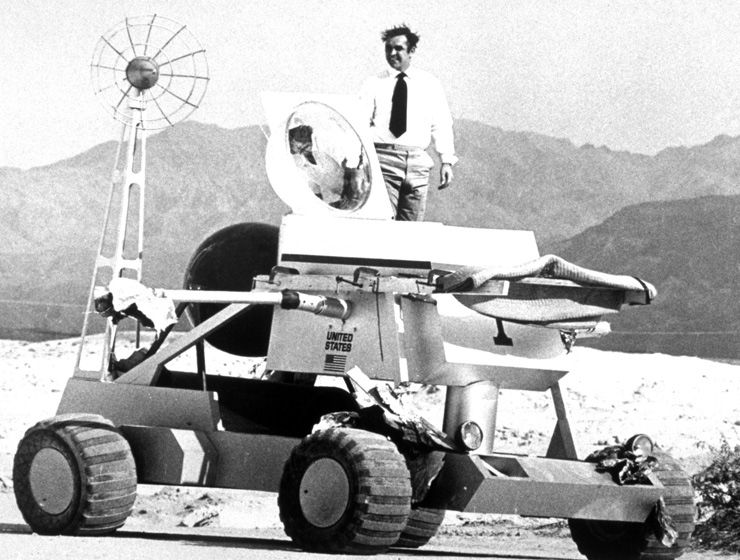 |
|
The return of Sean
Connery was announced in the press on March 3, 1971 - a month before
shooting began in Nevada. The star gave an interview to The Times
printed on April 12, 1971 - the day after he left London for Las Vegas, in
which he made it very clear that his return to the role of James Bond was a
one-off, and financially motivated. Also with an eye on the finances,
United Artists hastily initiated a re-release of three of Connery’s James
Bond films in the UK paired with Clint Eastwood Westerns. From April 1971
You Only Live Twice would be seen on a double-bill with A
Fistful of Dollars (1964); Goldfinger was paired with For A
Few Dollars More (1965) from June, and From Russia With Love
went out with Hang ‘Em High (1968) [another United Artists
distributed film] in November. The posters utilised the tag-line “The One
And Only!” - as if to erase the existence of George Lazenby from the
public's memory forever. The double-bills were an unusual choice as the
‘X’ certificate Clint Eastwood Westerns excluded cinemagoers under 18
years of age, so many cinemas chose to screen the Bond film with another
‘A’ certificate Western at afternoon performances [usually The
Magnificent Seven (1960), or its sequel Return of the Seven
(1966)] to allow children to attend unaccompanied by an adult, and thereby
maximise their box-office profits. |
 |
|
Whilst the producers were
still looking for their new 007,
Richard Maibaum (1909-1991) had delivered
his first draft of the screenplay, which was closer to Ian Fleming’s
original novel. Other drafts were a direct follow-up to On Her
Majesty’s Secret Service, with Bond on a vengeance mission following
the murder of his wife Tracy; and another version involved Auric Goldfinger's
twin (to be played by Gert Frobe), seeking revenge for the death of his
brother! Producer ‘Cubby’ Broccoli suggested a storyline that featured a
Howard Hughes-type recluse, after having a dream where he meets his former
employer Hughes, only to find he is an imposter. This idea became the Willard
Whyte character who has been kidnapped by Blofeld, who has also created
clones of himself and taken up residence in Whyte’s hotel penthouse. Also
at the suggestion of David Picker, American screenwriter
Tom Mankiewicz
(1942-2010) was brought in to adapt these elements into a new screenplay
that ultimately became the story used in the final film. In an interview with
Sheridan Morley for Film Night broadcast on BBC TV on July 31, 1971
whilst filming was underway at Pinewood Studios, Sean Connery said he
thought the script was the best they’d had for a Bond film thus far… In
the same interview Connery also stated that his return to Bond after four
years was to the lack of success of On Her Majesty’s Secret Service without
him, and was the reason he was asked to return, which gave him a much
better bargaining position financially rather than being just a
pawn in the game, as he had been in the past. This is true to a degree, but
OHMSS was far from being a failure, and did little to help its
reputation at the time. In reality On Her Majesty's Secret Service
was the biggest box-office attraction in the UK in 1970, and ultimately
recouped ten times its $8-million budget in worldwide release. |
 |
|
With a budget of
$7.2 million Diamonds Are Forever began principal photography on
April 5, 1971 with the Nevada Desert standing in for South Africa where
Bruce
Glover and Putter Smith openly gay as killers Mr. Wint and Mr. Kidd filmed
the sequence where they kill Dr. Tynan and obtain the diamonds needed for
the construction of Blofeld’s satellite. The production then moved to the
Circus Circus Hotel in Las Vegas where many of the casino interiors
were filmed, before moving out onto the streets on April 12th to begin
shooting the night-time car chase. ‘Cubby’ Broccoli’s friendship with
Howard Hughes (1905-1976) proved very useful, as many streets needed to be
closed off in order to control the action and crowds, and Hughes’
considerable influence in the city allowed this to take place. Sean Connery
arrived on set on the evening of April 14, 1971 to begin work on what he
was adamant would be his final performance as James Bond. The filmmakers
had a product placement deal with the Ford Motor Company to use their
vehicles, and Ford's only demand was that Sean Connery had to be seen
driving the 1971 red Mustang Mach 1. Filming the sequence where Bond flips
the car onto two wheels in order to escape the Las Vegas sheriff proved
very difficult to achieve on location and was completed at Universal
Studios with different stunt drivers. The original team had performed the
stunt on location with the Mustang exiting the alleyway on the correct two
wheels, but the footage was unusable as crowds of onlookers were visible
in the shot. Unfortunately the driving team at the studio performed the
stunt on the opposite two wheels to the location footage, so a new studio
insert shot of Sean Connery and Jill St. John inside the car was filmed to give
the impression Bond flipped the car again whilst inside the alleyway. This
glaring continuity error consequently marred an otherwise clever stunt
sequence. |
 |
|
For the first week in May
1971 production moved to the Johns Manville Gypsum plant outside Las Vegas,
which stood in for Willard Whyte's Techtronics, where the Moon Buggy
chase was filmed. The Moon Buggy was conceptualised by Oscar-winning
Production Designer Ken Adam, and engineered and built by famed movie
custom-car designer Dean Jeffries in his California workshop. Unlike any
other famous Bond vehicle the Moon Buggy is truly unique - there was only
ever one built! In addition to its appearance in the 1971 film, it was
used as the major centrepiece of the worldwide advertising campaign for
Diamonds Are Forever. After a worldwide publicity tour to promote the
film, the Moon Buggy was discarded
in the UK and allowed to fall into a state of
disrepair. The vehicle was eventually located by Graham Rye, editor and
publisher of 007 MAGAZINE, who organised the restoration of the buggy to its original
condition. On hire, the Moon Buggy was displayed as the impressive
centrepiece in Planet Hollywood's restaurant at Caesar's Palace in Las
Vegas from 1994 to 2004. On offer in auction at CHRISTIE'S ‘Film and
Entertainment’ sale on December 14th 2004, the Moon Buggy sold for £23,000
and was purchased by Planet Hollywood owner Robert Earl for display
at the Planet Hollywood Las Vegas Casino. In 2019 the Moon Buggy
was again offered in auction and sold for $400,000. |
|
CONTINUED |



